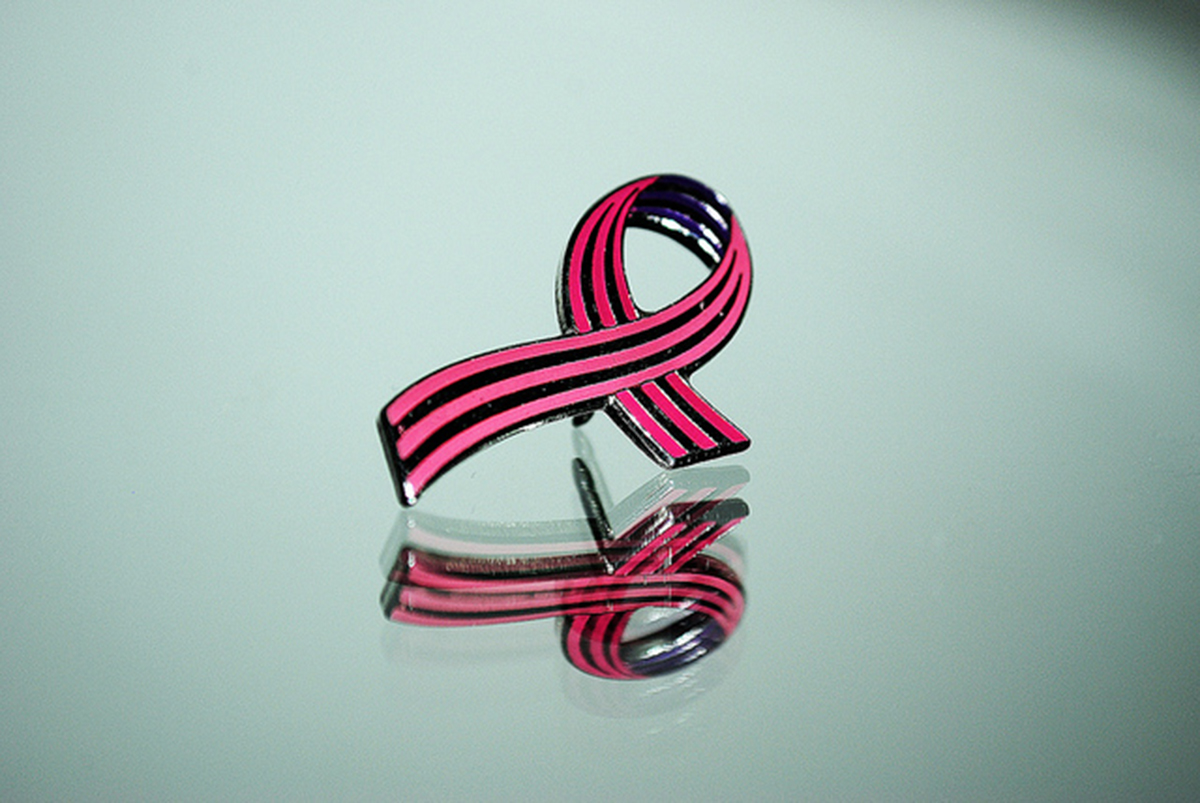Breast cancer comes in many different types, ranging from the very manageable to the very aggressive.
"Breast cancer" is talked about so much that it's easy to assume that all breast cancer cases are similar. In fact, breast cancer comes in many distinct types, some of which are much more serious than others. Here, we'll take a look at both common and less common types of breast cancer.
Ductal Carcinoma In Situ (DCIS)
The earliest form of breast cancer, ductal carcinoma in situ refers to the presence of cancerous cells within a milk duct. DCIS is considered to be non-invasive, meaning the cancer hasn't spread beyond the original site towards the rest of the breast or other parts of the body. Though DCIS isn't life-threatening, it can spread when it isn't treated.

Ductal carcinoma in situ is usually found during a routine mammogram or during a breast exam conducted for another reason. This form of breast cancer usually doesn't come with symptoms apparent to the patient, though some do notice a lump or bloody discharge from the nipple.
Breast-conserving surgery — a lumpectomy which removes only the cancerous tissues while saving the remaining part of the breast — is usually a very viable option. Women who undergo a lumpectomy are at a significantly higher risk of developing breast cancer again in the future (at about 25 to 30 percent), though also undergoing radiation therapy following surgery decreases the risk to about 15 percent.
Though the exact cause of DCIS is unclear, numerous factors increase a person's risk, notably the BRCA1 and BRCA2 genetic mutations, a personal history of breast disease, and a family history of breast cancer.
Invasive Ductal Carcinoma (IDC)
Invasive ductal carcinoma is the most common form of breast cancer — over 80 percent of all breast cancer cases fall into this category and around 180,000 are diagnosed with this form of breast cancer each year in the US alone. The term "invasive" means that this ductal carcinoma has spread to the surrounding breast tissue. This type of breast cancer becomes more common with age, and is also the type of breast cancer most likely to affect men.
As with DCIS, invasive ductal carcinoma may first be spotted on a mammogram. Unlike DCIS, this form of breast cancer may also be accompanied by symptoms you'll notice yourself. They include a lump in the armpit area, but also simply a feeling that the breast is heavier or more "full" in one particular area. A skin rash, breast and nipple pain, "orange peel" skin, a nipple that suddenly becomes inverted, and nipple discharge can all be symptoms as well.
People diagnosed with invasive ductal carcinoma will usually undergo surgery to remove the tumor to begin with. This can come in the form of a partial mastectomy, a simple mastectomy in which the whole breast is removed but that leaves the lymph nodes and underlying muscles intact, or a radical mastectomy in which some lymph nodes are removed along with the breast and muscular tissue. In some cases, a lumpectomy that only removes the tumor is also possible, though this increases the risk of recurrence.
If the cancer has spread to other parts of the body or the tumor is larger than a centimeter in diameter, chemotherapy and hormone therapy (when the cancer tests positive for hormone receptors) may be administered first in order to shrink the tumor and prepare for surgery. This chemotherapy will take between three and six months. When surgery comes first, radiation therapy follows. This can target the breast tissue from the outside, or be administered internally using a special device.
Tubular carcinoma, mucinous carcinoma of the breast, medullary carcinoma of the breast, invasive papillary carcinoma of the breast, and invasive cribriform carcinoma are all subtypes of IDC.
Less Common Forms Of Breast Cancer
Invasive Lobular Carcinoma (ILC)
Following invasive ductal carcinoma, invasive lobular carcinoma (ILC) is the most common type of breast cancer. Unlike invasive ductal carcinoma, inasvive lobular carcinoma begins within the lobules of the breast — the milk-producing glands. Making up only about 10 percent of all invasive breast cancer cases, ILC also doesn't come with the symptoms most women have come to expect from breast cancer. Rather than feeling a lump, patients may notice that the breast has thickened, swollen, or that the skin covering the breast has changed in texture. Though lumps can sometimes be felt, this is much rarer. An inverted nipple that wasn't inverted before can also be a warning sign.

The risk factors of this type of breast cancer are also different, and more complicated, when compared to invasive ductal carcinoma. The following categories of people are at a higher risk of developing invasive lobular carcinoma:
- Older women, above 55.
- People who had LCIS in the past.
- Women who used estrogen and progesterone during and after the menopause. These female hormones may both encourage tumour growth and make the cancer harder to detect on mammograms until it has spread.
- Those with diffuse gastric cancer syndrome.
- Those affected by the BRCA1 and BRCA2 genes.
As with IDC, the treatment path depends on the size of the tumor and whether the cancer has spread to the surrounding lymph nodes or other parts of the body. When the tumor is relatively small and the cancer hasn't spread, surgery wil be the first line of treatment. This can involve a lumpectomy, a partial mastectomy, a simple mastectomy, or a modified radical mastectomy — in which the lymph nodes and muscular tissue are also removed from the area. Again, radiation therapy will follow if you have surgery first. This can be done externally or internally.
Inflammatory Breast Cancer
An extremely aggressive form of breast cancer, inflammatory breast cancer is fortunately also extremely rare: between one and five percent of all US breast cancer cases fall into this category. Inflammatory breast cancer usually begins with a redness and swelling of the breast, rather than a lump, and it tends to affect people slightly younger than usual for breast cancer cases. Other symptoms include an aching feeling in the breast along with swollen lymph nodes.
Unlike the other forms of breast cancer we mentioned above, patients will typically receive chemotherapy before undergoing surgery. Anthracyclines and taxanes are typically used over the course of the chemotherapy treatment plan. Something called targeted therapy, which stops the cancer's cell growth, is also used in cases where the cancer tissue sample tests positive for HER2 receptors. A modified radical mastectomy is a common surgical approach for inflammatory breast cancer, and this is performed after chemotherapy.
- Photo courtesy of williami5: www.flickr.com/photos/williami5/7371700988/sizes/z/
- Photo courtesy of Arturo de Albornoz https://www.flickr.com/photos/liveu4/2011237087/


Your thoughts on this